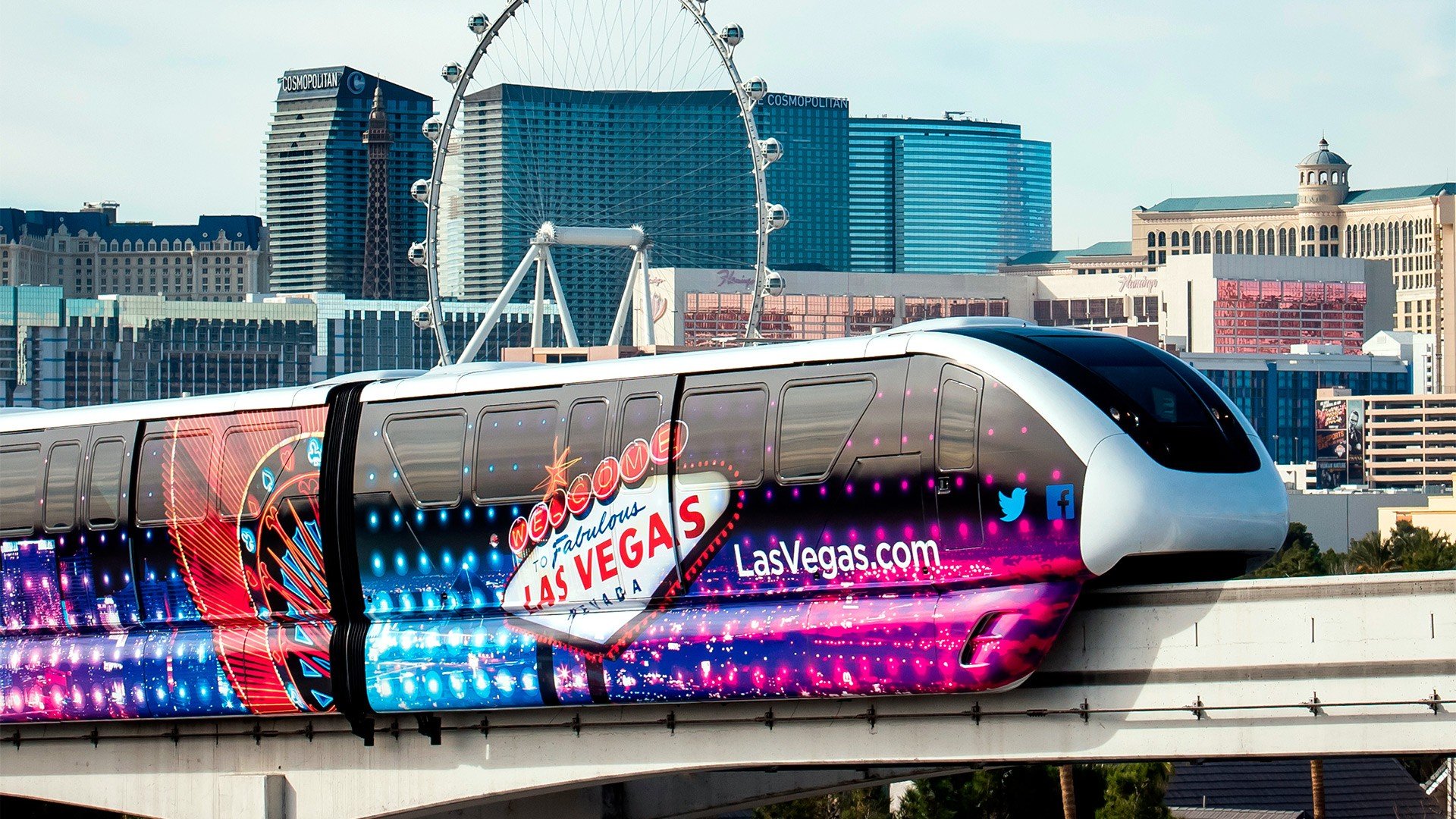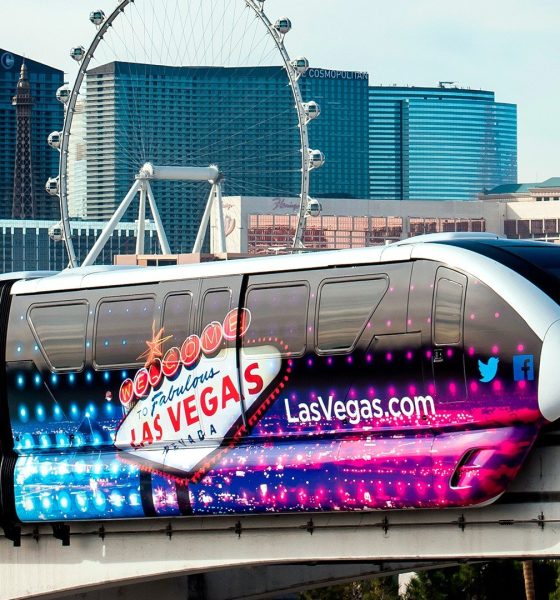

News
Boring Co. partner LVCVA obtains Vegas Monorail, making way for Vegas Loop expansion
The Boring Company’s partner in the Vegas Loop development, the Las Vegas Convention and Visitors Authority (LVCVA), has officially obtained the Vegas Monorail. The Monorail is the only mass-transit system in Vegas that runs parallel with the Strip, but it went bankrupt due to the COVID-19 pandemic. After the bankruptcy, the LVCVA purchased the Monorail system for $24.2 million, and it opens the door for the Boring Company to look at a possible expansion in the future.
“We are pleased the U.S. Bankruptcy Court today approved the sale of the Las Vegas Monorail Company’s assets to the LVCVA and look forward to the close of the transaction in the coming weeks,” LVCVA CEO Steve Hill said.
According to a report from NBC Affiliate News 3 LV, the sale of the Monorail was finalized on November 24th, and the LVCVA officially obtained the rights to run the system and handle its territories. Because the Monorail had rights to certain areas, other transportation options, like the Boring Co.’s Vegas Loop project, could not travel within certain areas of the Sin City. However, the LVCVA’s purchase of the project will now give the company and its entities a full range of options to expand in any area.
An exclusivity clause had previously halted any other companies from operating in the Monorail’s territories. But now, that is a thing of the past.
“Again, it’s the Boring Company and others that – what technology is out there, be it light rail, BRT (bus rapid transit), to be able to come in and expressly from the private sector invest in that corridor,” LVCVA Board Chairman Larry Brown said in July.
Entities like the Boring Company, who have ideas to revolutionize visitor travel in Las Vegas, have long sought to improve the situation. Still, the exclusivity clauses have become problematic for expansion. It has more or less become an issue of owning the rights to certain properties, which has helped alleviate the monopolization of public transportation in the area. However, this creates a bind for tourists and residents, as there would have been multiple tickets to buy and the tedious task of switching from one mode of transportation to another. Ultimately, it would have caused more harm than good if visitors were forced to do this.
The Vegas Monorail had exclusivity rights to the stops marked by the blue line. (Credit: Las Vegas Monorail)
Now that the LVCVA officially owns the rights to the Monorail and its territories, the Boring Company can begin to speculate that its expansion attempts could be approved. The Tesla-operated underground system that the Boring Company plans to use could end up holding stops at nearly every tourist attraction in Las Vegas, and it would move 8,000 people every hour in record time.
However, the LVCVA plans to continue the Monorail’s operation until its lifespan comes to a close. The Authority says it expects the Monorail to last another ten years, which would allow enough time for the group to begin preparing new ways to move people around from location to location. With the Boring Co. planning to have a sizeable presence in Las Vegas, the LVCVA could likely expand the Vegas Loop to the Monorail’s territories after becoming a defunct mode of transportation.
(Credit: The Boring Company)

News
Tesla starts showing how FSD will change lives in Europe
Local officials tested the system on narrow country roads and were impressed by FSD’s smooth, human-like driving, with some calling the service a game-changer for everyday life in areas that are far from urban centers.

Tesla has launched Europe’s first public shuttle service using Full Self-Driving (Supervised) in the rural Eifelkreis Bitburg-Prüm region of Germany, demonstrating how the technology can restore independence and mobility for people who struggle with limited transport options.
Local officials tested the system on narrow country roads and were impressed by FSD’s smooth, human-like driving, with some calling the service a game-changer for everyday life in areas that are far from urban centers.
Officials see real impact on rural residents
Arzfeld Mayor Johannes Kuhl and District Administrator Andreas Kruppert personally tested the Tesla shuttle service. This allowed them to see just how well FSD navigated winding lanes and rural roads confidently. Kruppert said, “Autonomous driving sounds like science fiction to many, but we simply see here that it works totally well in rural regions too.” Kuhl, for his part, also noted that FSD “feels like a very experienced driver.”
The pilot complements the area’s “Citizen Bus” program, which provides on-demand rides for elderly residents who can no longer drive themselves. Tesla Europe shared a video of a demonstration of the service, highlighting how FSD gives people their freedom back, even in places where public transport is not as prevalent.
What the Ministry for Economic Affairs and Transport says
Rhineland-Palatinate’s Minister Daniela Schmitt supported the project, praising the collaboration that made this “first of its kind in Europe” possible. As per the ministry, the rural rollout for the service shows FSD’s potential beyond major cities, and it delivers tangible benefits like grocery runs, doctor visits, and social connections for isolated residents.
“Reliable and flexible mobility is especially vital in rural areas. With the launch of a shuttle service using self-driving vehicles (FSD supervised) by Tesla in the Eifelkreis Bitburg-Prüm, an innovative pilot project is now getting underway that complements local community bus services. It is the first project of its kind in Europe.
“The result is a real gain for rural mobility: greater accessibility, more flexibility and tangible benefits for everyday life. A strong signal for innovation, cooperation and future-oriented mobility beyond urban centers,” the ministry wrote in a LinkedIn post.
News
Tesla China quietly posts Robotaxi-related job listing
Tesla China is currently seeking a Low Voltage Electrical Engineer to work on circuit board design for the company’s autonomous vehicles.

Tesla has posted a new job listing in Shanghai explicitly tied to its Robotaxi program, fueling speculation that the company is preparing to launch its dedicated autonomous ride-hailing service in China.
As noted in the listing, Tesla China is currently seeking a Low Voltage Electrical Engineer to work on circuit board design for the company’s autonomous vehicles.
Robotaxi-specific role
The listing, which was shared on social media platform X by industry watcher @tslaming, suggested that Tesla China is looking to fill the role urgently. The job listing itself specifically mentions that the person hired for the role will be working on the Low Voltage Hardware team, which would design the circuit boards that would serve as the nervous system of the Robotaxi.
Key tasks for the role, as indicated in the job listing, include collaboration with PCB layout, firmware, mechanical, program management, and validation teams, among other responsibilities. The role is based in Shanghai.
China Robotaxi launch
China represents a massive potential market for robotaxis, with its dense urban centers and supportive policies in select cities. Tesla has limited permission to roll out FSD in the country, though despite this, its vehicles have been hailed as among the best in the market when it comes to autonomous features. So far, at least, it appears that China supports Tesla’s FSD and Robotaxi rollout.
This was hinted at in November, when Tesla brought the Cybercab to the 8th China International Import Expo (CIIE) in Shanghai, marking the first time that the autonomous two-seater was brought to the Asia-Pacific region. The vehicle, despite not having a release date in China, received a significant amount of interest among the event’s attendees.
Elon Musk
Elon Musk and Tesla AI Director share insights after empty driver seat Robotaxi rides
The executives’ unoccupied tests hint at the rapid progress of Tesla’s unsupervised Robotaxi efforts.

Tesla CEO Elon Musk and AI Director Ashok Elluswamy celebrated Christmas Eve by sharing personal experiences with Robotaxi vehicles that had no safety monitor or occupant in the driver’s seat. Musk described the system’s “perfect driving” around Austin, while Elluswamy posted video from the back seat, calling it “an amazing experience.”
The executives’ unoccupied tests hint at the rapid progress of Tesla’s unsupervised Robotaxi efforts.
Elon and Ashok’s firsthand Robotaxi insights
Prior to Musk and the Tesla AI Director’s posts, sightings of unmanned Teslas navigating public roads were widely shared on social media. One such vehicle was spotted in Austin, Texas, which Elon Musk acknowleged by stating that “Testing is underway with no occupants in the car.”
Based on his Christmas Eve post, Musk seemed to have tested an unmanned Tesla himself. “A Tesla with no safety monitor in the car and me sitting in the passenger seat took me all around Austin on Sunday with perfect driving,” Musk wrote in his post.
Elluswamy responded with a 2-minute video showing himself in the rear of an unmanned Tesla. The video featured the vehicle’s empty front seats, as well as its smooth handling through real-world traffic. He captioned his video with the words, “It’s an amazing experience!”
Towards Unsupervised operations
During an xAI Hackathon earlier this month, Elon Musk mentioned that Tesla owed be removing Safety Monitors from its Robotaxis in Austin in just three weeks. “Unsupervised is pretty much solved at this point. So there will be Tesla Robotaxis operating in Austin with no one in them. Not even anyone in the passenger seat in about three weeks,” he said. Musk echoed similar estimates at the 2025 Annual Shareholder Meeting and the Q3 2025 earnings call.
Considering the insights that were posted Musk and Elluswamy, it does appear that Tesla is working hard towards operating its Robotaxis with no safety monitors. This is quite impressive considering that the service was launched just earlier this year.








